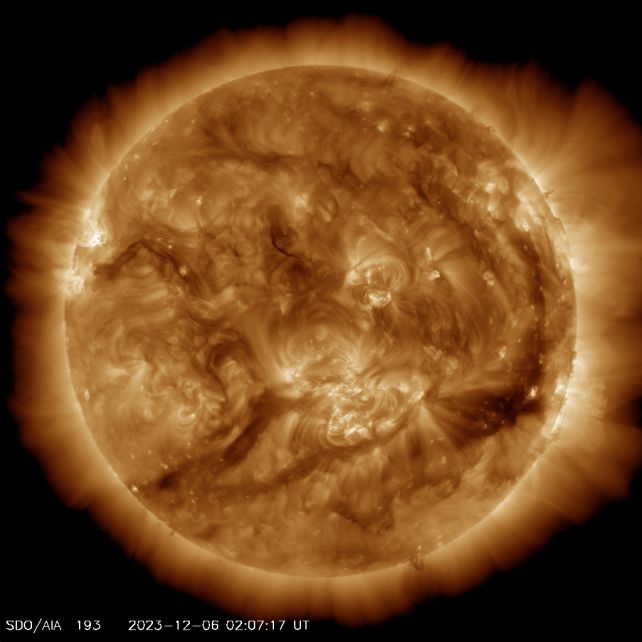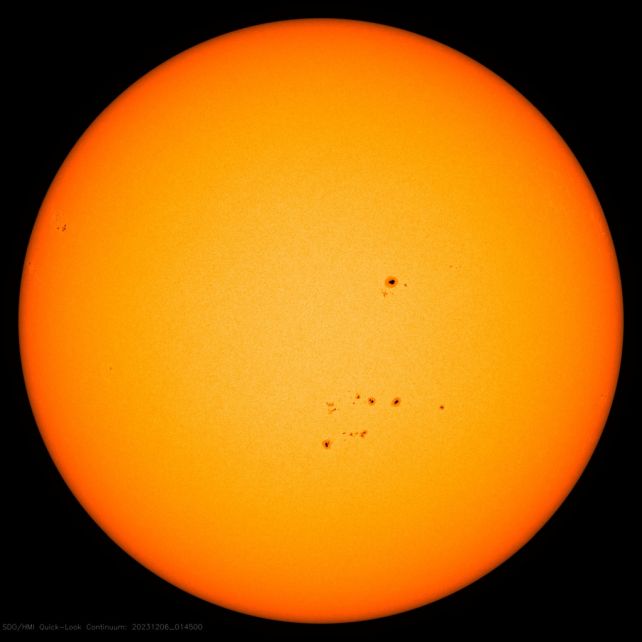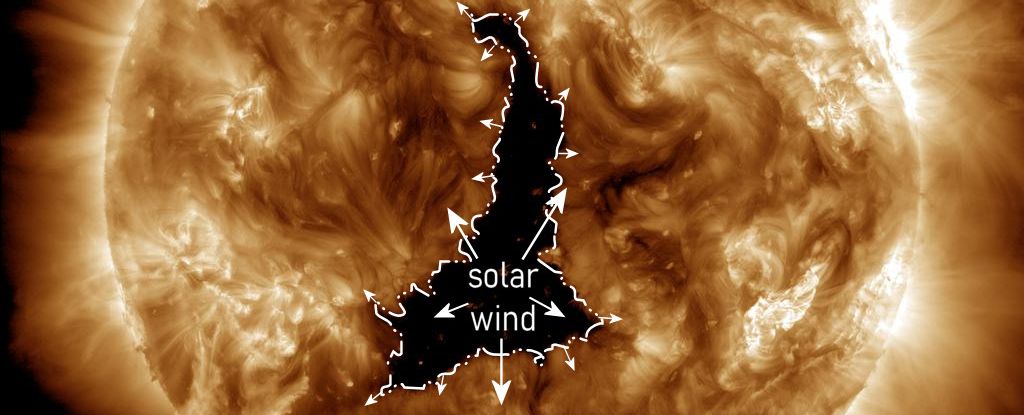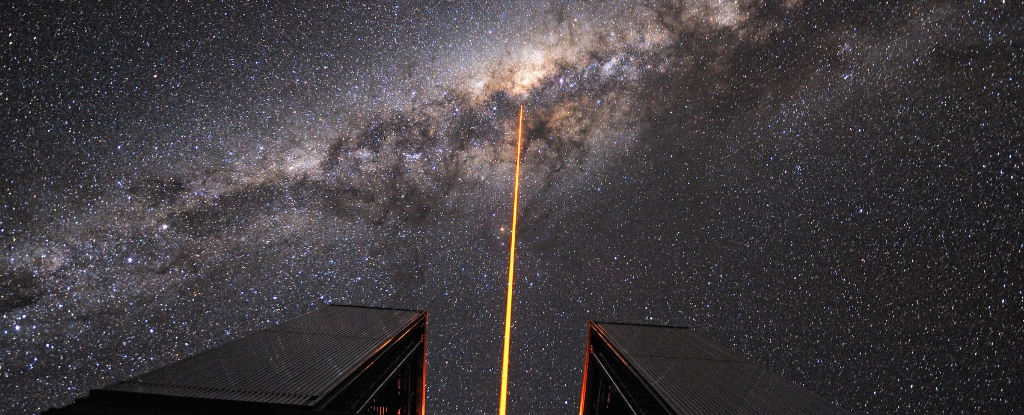A giant hole in the atmosphere of the Sun more than five times larger than the diameter of Jupiter is unleashing a powerful solar wind that’s blasting through the Solar System.
It’s called a coronal hole, and it’s currently rotating away from Earth – but a few days ago, from its position straddling the equator, it was pointed right at us, directing a stream of particles in Earth’s direction.
The result was nothing to be alarmed about – a mild solar storm – but the hole does contribute to a wider pattern of rampant solar shenanigans as we enter solar maximum.
The Sun has been quite rowdy lately, which is sort of to be expected.
Our star goes through activity cycles, in which it gets more active with sunspots, solar flares, coronal mass ejections, and coronal holes.
This activity escalates to a peak – solar maximum – before subsiding again towards solar minimum, a period of relative calm and minimal activity.
This cycle appears to be driven by, or coincide with, the Sun’s magnetic cycles, during which the solar magnetic field reverses polarity, and its north and south poles switch places.
This switch happens at solar maximum, which is due to take place sometime in 2024.
You probably know about sunspots, solar flares, and coronal mass ejections. A sunspot is a temporary spot on the Sun where magnetic fields get quite a bit stronger. This results in a cooler, darker freckle on the Sun’s face.
Solar flares and coronal mass ejections are eruptions, often associated with sunspots, that are caused by a giant release of energy that occurs due to magnetic field lines snapping and reconnecting.
A coronal hole, by contrast, is a large region where the solar magnetic field opens up. They can’t be seen in optical light, like sunspots; but when we look in ultraviolet wavelengths, we see huge, dark patches that are dimmer than their surroundings because they are cooler.

Because the magnetic field is open, the wind that constantly blows from the Sun can escape more readily. The result is a more powerful gusting of solar particles and plasma out into the Solar System, flowing around any planets that may be in their path.
The current hole, which at time of writing has almost rotated away to the far side of the Sun, is a big’n; as per Spaceweather, it measures around 800,000 kilometers (500,000 miles) along its longest axis. Jupiter’s diameter is around 140,000 kilometers; Earth’s is 12,742.
The hole was facing Earth around 2 December, and the solar wind smacked into us over the course of 4 and 5 December.
The result, as per the NOAA, was at most a G1- to G2-level solar storm. That’s the mildest of the solar storms that can hit us, and not much would have been noticeable to most of us.
Here’s what happens. Particles from the solar wind hit Earth’s magnetosphere and get diverted along magnetic field lines to the poles, where they are deposited into the upper atmosphere. There, they interact with atmospheric particles to create an auroral glow, which is pretty nice.
The enhanced currents in Earth’s ionosphere and magnetosphere can also interfere with power grids, satellite operations, radio communications, and navigation systems.
For G1- and G2-level storms, though, the effects are fairly minimal.

The more powerful solar storms are generated by coronal mass ejections and flares. A coronal hole is relatively passive; the solar wind is more powerful, but it’s not being actively flung outwards with an additional push. A violent coronal mass ejection or flare, by contrast, actively ejects material outwards.
The current solar cycle has already proven to be much stronger than initially expected, and is going to continue in this vein for a little while longer.
We’ve already seen some absolutely breathtaking auroral activity this year due to solar eruptions, and at much lower latitudes than such lightshows usually reach.
However, the NOAA has predicted that the maximum sunspot number for the current cycle will be 173. That’s below the average maximum of 179, and very far below the highest on record, which was the 19th solar cycle with a maximum of 285 sunspots in March 1958.
Here’s hoping we get to see more swirling green skies in the months to come.





